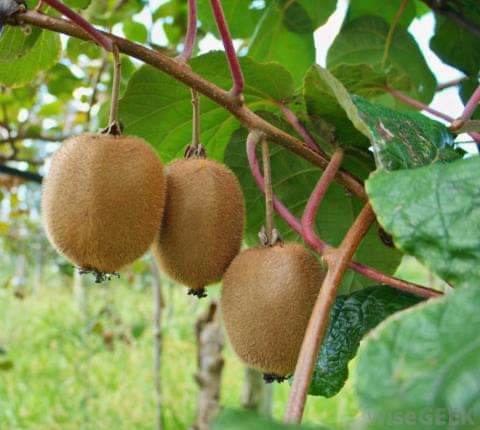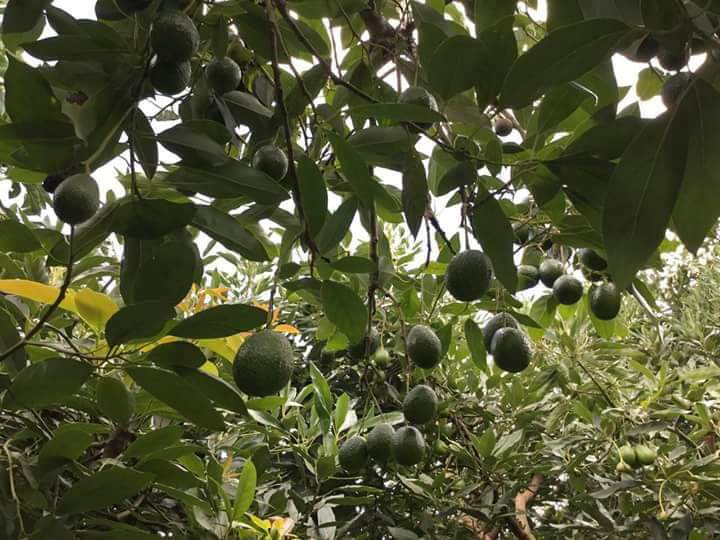This fruit used to be known as Chinese Gooseberry because it came from Asia. Latterly it has been popularised by the term Kiwi fruit, because New Zealand Horticulturalists put a lot of work into breeding new hybrids and it became an important commercial crop there. It was formerly classified botanically as Actinidia chinensis but is now known as Actinidia deliciosa.
The egg shaped brown fuzzy fruits of the Chinese Gooseberry are very high in Vitamin C; although quite unattractive externally when sliced the inner flesh reveals a beautifully designed pattern within.
Only female vines produce fruits. Hardy kiwis are dioecious, meaning male and female flowers are borne on separate plants. So, for growing kiwi fruit, you’ll need to plant one male vine for every eight or nine female vines. Since vines are vegetatively propagated, the vines will be “sexed” when you purchase them.
Such a lofty climber needs very sturdy supports. A series of horizontal wires properly anchored into the wall or fence every 45cm (18in) should give them the leg-up they need. Use a thick-gauge wire and tighten them into place with robust vine eye screws. You could also try growing a vine up a trellis – assuming it’s strong enough for the job.
Growing Kiwi Fruit
- Kiwi require plenty of space and a sheltered, sunny spot in which to thrive.
- If planting both a female and male, space 3–4.5 m (10–15 feet) apart.
- Plant into a slightly acidic soil, well-drained and rich in organic matter, against a wall or fence
- Mulch around the base of the plant, avoiding direct contact with the stem to prevent rotting, and apply a general-purpose fertilizer as the new spring growth starts.
- Tie in the stems as they grow.
- Don’t let the plant dry out, particularly in hot, dry weather.
- New plants start to produce fruits after 3–4 years.
Pruning
For many people growing kiwi fruit, pruning is the most challenging task.
The vines must be pruned with a sharp pair of high-quality pruners when they’re dormant in the cold season, and again two or three times throughout the warm weather.
Prune out any branches that produced fruit the previous season, as well as any dead or crossed branches. The one-year-old branches produce the most fruit, so don’t prune them out, instead trim them back to the eighth node up from the base of the plant (the nodes look like little nubs along the branch). These nodes will push out new fruiting spurs in the spring.
Pruning involves removing any long, arching vines that extend beyond the developing fruits.

Any non-flowering vines that extend off the trellis can be removed in the warm months as well.
Bugs & diseases
These fruits are troubled little by pests.
Leaf rolling caterpillars can sometimes be a pest you will encounter but are quite easily controlled.
The greatest problem we have on the Nursery comes with young plants which seem to be very attractive to slugs and snails. It is wise to provide some slug bait or a slug trap nearby, although vines grown on sunny walls tend to escape this type of damage because the conditions are unsuitable for our slimy enemies.
The vines can be susceptible to necrosis or discoloration. This is usually due to a short of nitrogen or potash both of which are easily applied so if the leaves start to yellow or brown around the edged then you know what do to.




